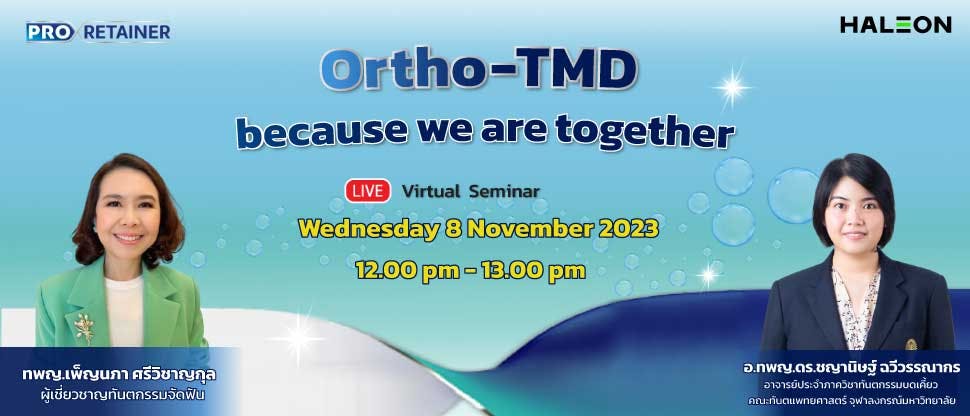
Ortho-TMD because we are together
The possible association between orthodontic treatment and temporomandibular disorders (TMD) is a topic of great interest in the current literature. TMD etiology has a multifactorial aspect in which TMD incidence was very similar in treated and untreated patients. TMD signs and symptoms may exist in healthy individuals.
From the clinical perspective, a thorough examination of the stomatognathic system is always necessary in order to detect possible TMD signs and symptoms prior to the beginning of the orthodontic therapy. Caution should be exercised when planning, performing and finalizing orthodontics, especially in patients who have a history of signs and symptoms of TMD. The clinician must always eliminate patient’s pain and dysfunction before initiating any orthodontic treatment.
TMD symptoms may develop during orthodontic treatment, but there is inconclusive evidence that orthodontic mechanics can predispose patients to a higher risk for TMD. Even though the accomplishment of a stable occlusion is one of the orthodontic goals, TMD cannot be attributed to the failure in achieving this aim. Also, there is little evidence that orthodontic treatment can prevent TMD. This virtual lecture will present some clinical situations that related to how to evaluate and manage TMD during orthodontic treatment.
Event Date: 8-Nov-23
Start Time: 12:00 PM
End Time: 13:00 PM
Duration: 1 Hour
Language: Thai
Presenter Name : Dr.Pennapa Srivicharnkul and Dr.Chayanit Chaweewannakorn